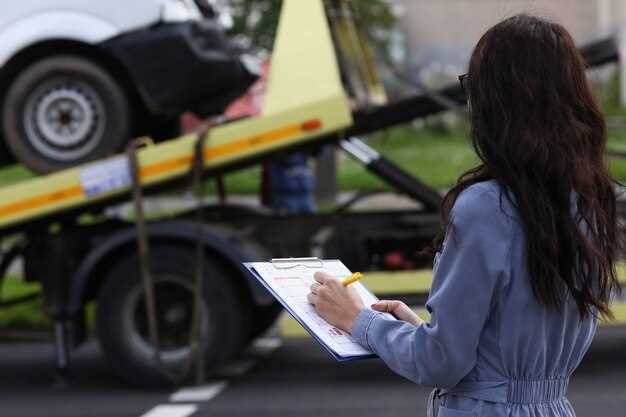
Transporting a newly purchased race car requires meticulous planning and understanding of logistics involved in the process. Unlike standard vehicles, race cars are often built with delicate components and specialized parts that demand careful handling and secure transportation methods. To ensure that your investment arrives at its destination without damage, it is essential to follow best practices tailored for high-performance automobiles.
One of the first steps in the transportation process is selecting the right mode of transport. Enclosed trailers are typically preferred for race cars since they provide protection from environmental factors that could potentially harm the vehicle’s exterior and internal systems. Properly ensuring that the car is securely fastened within the trailer is equally important, as it can prevent any movement that may lead to damage during transit.
In addition to choosing the appropriate transport method, understanding the logistics of timing and scheduling cannot be overlooked. Coordinating pickup and delivery times with the shipping company, as well as accounting for potential delays, will help you manage expectations. It is also wise to have a thorough checklist that includes inspection upon arrival, ensuring that your race car is in perfect condition before you take it out on the track.
Choosing the Right Transportation Method for Race Cars
When it comes to transporting race cars, selecting the appropriate method is crucial for ensuring safety and performance integrity. There are several options available, each with its own advantages and considerations.
Enclosed Trailers are often the preferred choice for serious racers. They provide maximum protection from environmental elements, dust, and potential damage during transit. An enclosed trailer keeps the car secure and can be equipped with additional features such as tie-down systems and ventilation, making them ideal for high-value vehicles.
Open Trailers offer a more cost-effective alternative but come with increased exposure to the elements. They are easier to load and unload, making them suitable for short distances or less expensive vehicles. However, it is essential to consider the potential for debris damage during transport.
Professional Transport Services are another option. These companies specialize in transporting race cars and often have experienced personnel handling the logistics. Utilizing a professional service ensures that your vehicle is in expert hands and minimizes the risk of damage. However, this method can be more expensive.
Flatbed Trucks provide versatility in transport. They allow for quick loading and unloading and can accommodate various vehicle sizes. However, securing the car properly is vital to prevent movement during transit.
Ultimately, the choice of transportation method should be guided by factors such as distance, budget, and the value of the car. Thoroughly assessing these elements will help ensure that your race car arrives safely and ready for its next competition.
Preparing the Race Car for Safe Transport
Preparing a race car for transport requires careful attention to detail to ensure its safety throughout the logistics process. First, start by cleaning the vehicle thoroughly to remove dirt and debris, which can conceal potential issues and make inspections difficult. Check all fluid levels, including oil, coolant, and fuel, ensuring they are within recommended limits to prevent leaks or spillage during transit.
Next, evaluate the tire pressure and condition. Inflate tires to the manufacturer’s specifications and inspect them for any signs of wear or damage. Proper tire maintenance is crucial, as incorrect pressure can lead to handling issues and potential damage during transport.
Secure all loose components within the car. This includes racing harnesses, tools, and components that could shift during transport. It’s advisable to remove any detachable parts, such as spoilers or mirrors, to minimize the risk of damage. Utilize bubble wrap or foam padding for delicate areas.
For race cars, a thorough inspection of the suspension system, brakes, and transmission is essential. Ensure that all systems are functioning correctly and that the car is in optimal condition. Take photos of the car’s condition before shipping for reference in case of any damage during transit.
Finally, choose the proper transport method that aligns with your logistical needs. Enclosed trailers offer the best protection from the elements and road debris. Ensure that the car is securely strapped down to prevent movement while in transit. Using appropriate tie-downs can prevent stress on the chassis and suspension, further protecting the car during transport.
Finding Reliable Logistics Partners for Car Shipping
Transporting a race car requires careful planning and coordination. Selecting a reliable logistics partner is crucial to ensure that your vehicle arrives safely at its destination. Here are some key factors to consider when searching for the right logistics partner for car shipping:
- Experience in Handling Race Cars: Look for logistics companies that specialize in transporting high-value vehicles. They should have a thorough understanding of the unique requirements and handling procedures involved with race cars.
- Insurance Coverage: Verify that the logistics partner provides adequate insurance coverage. This protects your investment in the event of damage or theft during transport.
- Reputation and Reviews: Research potential logistics providers by checking online reviews and ratings. Customer testimonials can provide insight into the reliability and quality of service offered.
- Transparent Pricing: Obtain detailed quotes from multiple logistics companies. Ensure there are no hidden fees and that the pricing structure is clear to avoid unexpected costs later.
- Transportation Methods: Inquire about the transportation methods used, such as enclosed trailers versus open transport. Enclosed transport is generally recommended for race cars to offer better protection.
- Communication: A reliable logistics partner should provide regular updates throughout the shipping process. Choose a company that communicates promptly and effectively.
- Track Record of Timely Deliveries: Investigate the logistics company’s history regarding on-time deliveries. Meeting deadlines is critical in the racing world, where time-sensitive events often dictate schedules.
Finding a trustworthy logistics partner requires thorough research and consideration. By evaluating these factors, you can enhance the safety and reliability of your car shipping experience, ensuring your race car is well taken care of during its journey.
Understanding Insurance Options for Transported Race Cars
When purchasing a race car, ensuring its safety during transportation is paramount. An essential aspect of this process is understanding the insurance options available for your vehicle. Proper coverage not only protects your investment but also provides peace of mind during logistics.
Several types of insurance can apply to transported race cars, each catering to different needs and scenarios. Here, we will explore the common options and their key features.
| Insurance Type | Description | Best For |
|---|---|---|
| Transport Insurance | Covers damages incurred during the shipping process. | Individuals who hire transport services. |
| Comprehensive Coverage | Offers protection against theft, vandalism, and natural disasters. | Owners seeking maximum protection for their vehicle. |
| Liability Insurance | Protects against damages caused to third parties during transport. | Transport companies and individual owners. |
| Garage Keeper’s Liability | Covers damages to a car while in the care of a transport provider. | Clients using transport services that store the vehicle temporarily. |
| Specialized Race Car Insurance | Tailored coverage for racing vehicles, including transport-specific clauses. | Enthusiasts and professional racers with high-value cars. |
When selecting insurance for your transported race car, consider the total value of the vehicle, the transportation method, and the reputation of the logistics provider. Additionally, verify the coverage limits and exclusions to ensure comprehensive protection. It is advisable to consult with an insurance agent who specializes in automotive insurance to tailor a plan that meets your specific needs.
Investing time into understanding these insurance options will facilitate a smoother transportation experience, safeguarding your investment during every step of the logistics chain.
Monitoring the Transport Process: What to Look For

When you purchase a race car, ensuring its safe transport is crucial. Monitoring the transport process involves several key aspects to ensure the vehicle arrives in excellent condition.
First, verify the transport company’s reputation before entrusting them with your race car. Research customer reviews and testimonials to understand their reliability and service quality. A reputable company will have experience specifically in handling high-value or performance vehicles.
Second, obtain detailed information about the transport method being used. Enclosed transport is typically preferred for race cars, as it provides additional protection from weather elements and road debris. Ensure that the transport vehicle has the necessary equipment, such as tie-downs and protective padding, to secure your car properly.
During the transport process, maintain communication with the transport company. Regular updates will help you stay informed about the progress and any potential issues that may arise. Ask for tracking information to monitor the vehicle’s location in real time, if available.
Additionally, inspect the car before it is loaded and after it arrives at your destination. Document any pre-existing damage with photographs, which can serve as evidence if disputes arise later. This step is particularly important for high-performance vehicles, as even minor damage can affect performance and value.
Finally, ensure that proper insurance coverage is in place during transport. Understand the policy details, including what is covered and what is not, to protect your investment and mitigate financial risk in case of unforeseen incidents during the transport process.
Post-Transport Inspection and Setup for Race Cars

After the transportation of race cars, conducting a thorough post-transport inspection is crucial to ensure optimal performance and safety. The logistics of moving a race car can expose it to potential damages or misalignments, making a detailed check even more important.
Begin by examining the exterior for any physical damage, including scratches, dents, or signs of moisture intrusion. Inspect for stress on the suspension components, which may have shifted during transit. Checking for leaks under the car, especially in the fuel and oil systems, is essential to prevent potential hazards.
Next, assess the tires for proper inflation and alignment. Transport can sometimes impact tire pressure; therefore, ensure that they are inflated to the manufacturer’s specifications. Look for any signs of uneven wear, which could indicate alignment issues that need to be addressed before racing.
Once the car is cleared for any external damages, turn your focus to the internal components. Verify that all safety equipment, such as harnesses and fire extinguishers, are securely installed and functional. Conduct a battery check to confirm that it is properly charged and securely mounted, as vibrations during transport can loosen connections.
Additionally, take time to inspect the fluid levels, including coolant, brake, and transmission fluids. Top off any fluids that are low and check for potential leaks in hoses and seals. This will ensure that the car is ready for track conditions without unnecessary interruptions.
Finally, once the inspection is complete, proceed with a setup calibration. Adjustments to suspension settings, ride height, and tire pressures should be made according to your specific track requirements. This meticulous process enhances the performance and handling of the race car, ensuring it is race-ready.




